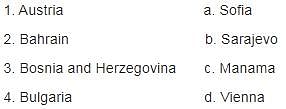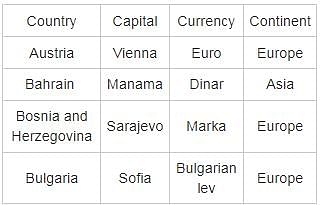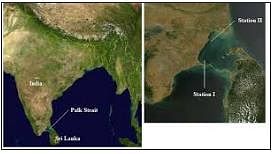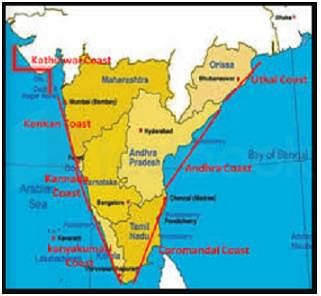UPPSC GS I Practice Test - 17 (Old Pattern) - UPPSC (UP) MCQ
30 Questions MCQ Test UPPSC Mock Test Series 2025 - UPPSC GS I Practice Test - 17 (Old Pattern)
The Joint sitting of both the Houses is chaired by the
Copernicus Sentinel-6, recently in news is
| 1 Crore+ students have signed up on EduRev. Have you? Download the App |
Match the following countries with their capital :


In Sep 2020, Uttar Pradesh Chief Minister Yogi Adityanath announced to set up the country's biggest film city in which of the following cities?
Which of the following schedule is related to the functioning of the Panchayati Raj system?
Which type of forest is found in the terai region of Uttar Pradesh?
China successfully launched its first unmanned space mission in November 2020 to collect samples from the moon's surface and return them to earth. Which of the following probes from the southern province of Hainan was successfully launched by China?
Which of the following provisions of the Constitution of India have a bearing on Education?
1. Fundamental Rights
2. Preamble
3. Fundamental Duties
Select the correct answer using the code given below
Which of the following rivers do not originate in India?
Consider the following statements regarding the Ramsar Convention.
1. The Ramsar Convention signed on 2nd February 1971.
2. The Asan Conservation Reserve in Dehradun, the first wetland from Uttarakhand to be recognised by Ramsar convention.
Which of the statements given above is/are correct?
Who was the chairman of the Constitution Drafting Committee?
A Judge of the Supreme Court may resign his office by writing to:
Safaimitra Suraksha Challenge has launched by which of the following ministry?
The largest coastal lagoon in India is
Which Strait divides Indian and Sri Lanka?
A teenager in which country has won the International Children's Peace Prize for his efforts to educate young people about cyberbullying?
Konkan coast and Coromandel Coast in India are located
Which of the following river of India is NOT a tributary of Damodar River?
Which state has announced to run the family planning program in mission mode, in September 2020?
When there is equal voting on any subject, the vote of the speaker of any House of Parliament is called ______.
The largest automobile manufacturing unit in the world is located in
The following items consist of two statements, Statement I and Statement II Examine these two statements carefully and select the correct answer using the code given below:
Statement I: Plantation farming has mostly been practiced in humid tropics
Statement II: The soil of humid tropics is highly fertile
Which of the following has released the backend code of the Aarogya Setu App in the open domain?
Explanthe ation: The correct answer is the Ministry of Electronics and Information Technology.
Ministry of Electronics and Information Technology has released the backend code of Aarogya Setu App in the open domain.
It has been released as per the policy of Government of India to share all code repositories with the developer community.
The App has been downloaded by more than 16.43 crore users.
It has helped identify Bluetooth contacts of COVID-positive users.
Which one of the following is a result of rapid industrialization and urbanization?
Trade Facilitation Centre and Craft Museum have been established in which district of Uttar Pradesh?
Which of the following was the focus area for the Second Five Year Plan
The Government of India has established NITI Aayog to replace the
The court music that was emerged in the medieval age of the Indian history in the state Uttar Pradesh was famous in which cities?
Which among the following states in India has provided the highest number of employment under the Mahatma Gandhi National Rural Employment Guarantee Scheme?
|
2 docs|37 tests
|























